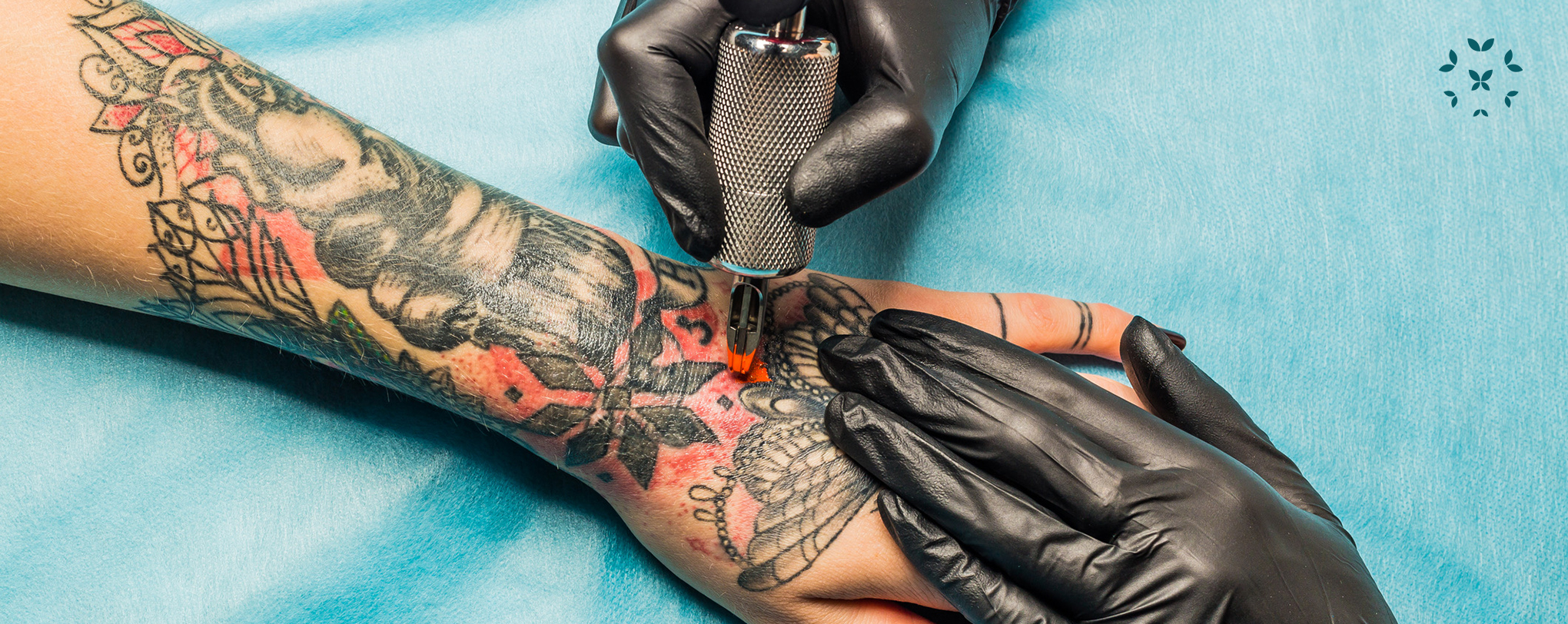Lupus and Tattoos
It is estimated that almost one-third of all people on earth have at least one tattoo … including many living with lupus. You may have heard conflicting opinions on whether someone with an autoimmune disease should get a tattoo. To help, here are some of the most important facts and safety concerns to consider before making this decision for yourself.
- Introduction
- A Very, Very Brief History of Tattoos
- Types of Tattoos
- Medical Implications and Risks of Tattoos for Those With Lupus
- Tattoos on Darker Skin
- What To Do After You Decide to Get a Tattoo
- In Conclusion
Introduction
Tattoos have been a part of human culture for thousands of years. This form of permanent (or semi-permanent) body art can be a very personal example of self-expression or a very public form of group identity – or both. Though tattoos come in a wide variety of forms and entail different traditional or modern techniques, all tattoos involve inserting some form of pigment (often inks) into the dermis layer of the skin using a sharp device.
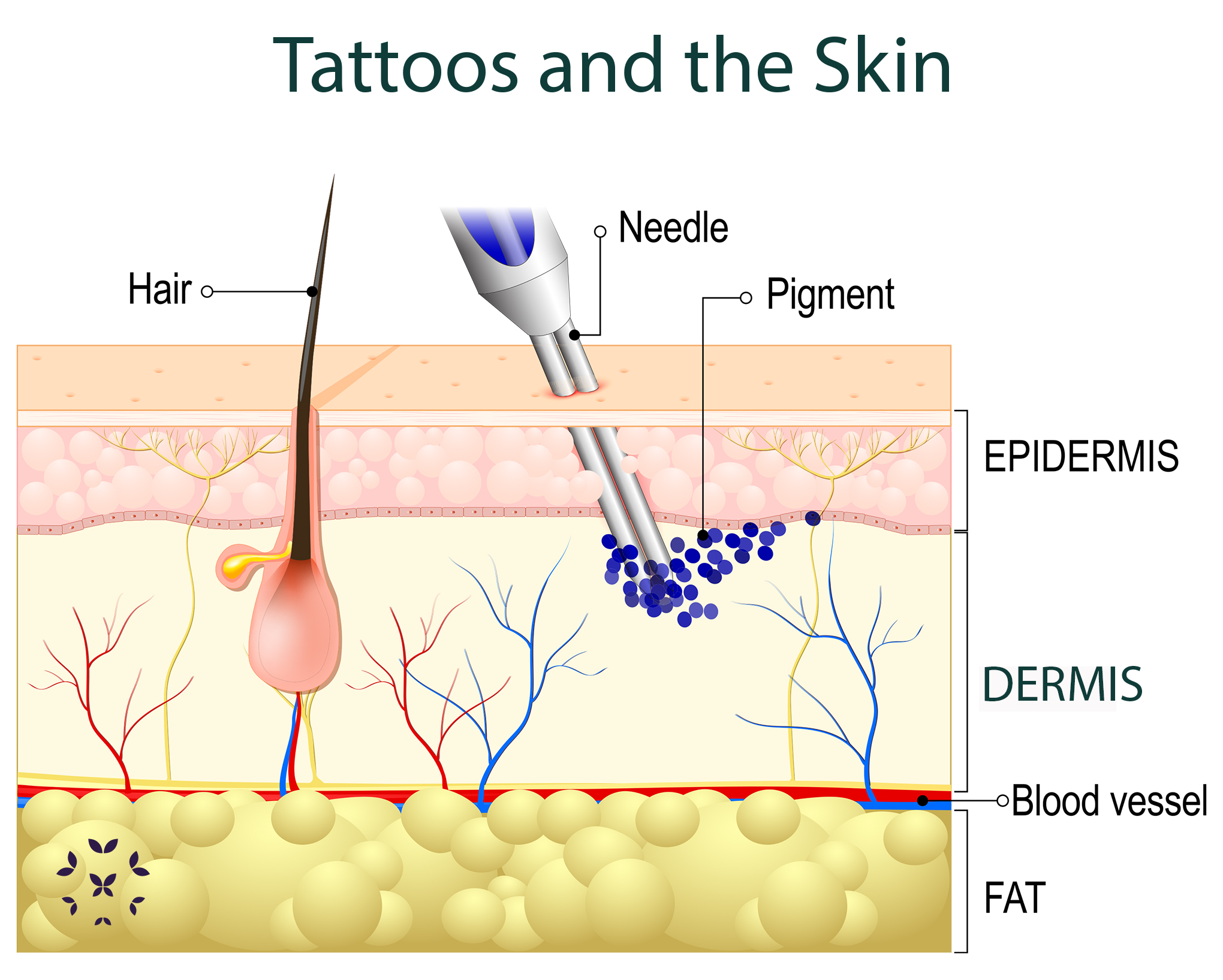
As the body’s most important layer of protection from injury and infection, the skin may react to this and may initiate an immune response. Obviously, this can be particularly problematic for those with autoimmune conditions or a compromised immune system. Yet, many people with lupus have gotten tattoos without any problems. As with lupus itself, each person’s experience with tattooing is unique. The most important thing is to be well-informed, consult your own, trusted healthcare professional, research and choose a qualified tattoo artist who shares your aesthetic vision.
A Very, Very Brief History of Tattoos
There is evidence that ancient Egyptians practiced tattooing. Tattoos were also found on the remains of Ötzi, the Neolithic “ice man” found in the Italian Alps – who lived 5,200 years ago. Yet, people have almost certainly adorned themselves with tattoos tens of thousands of years before that.
Tattoos reached a particularly high art form in Polynesian cultures. As a matter of fact, the word “tattoo” originated from Polynesian words, such as “tatau” or “tatu,” which generally mean “to strike” or “to mark” the skin. During the Middle Ages, tattooing fell out of favor in Christian Europe, but centuries later, sailors and explorers, like Captain James Cook, brought the practice back from their travels and reintroduced the art form there. The revival of traditional cultures of Polynesia, India, Africa, East Asia, the Celts, Native Americans and others continue to inspire tattoos today.

.
.
Types of Tattoos
According to the American Academy of Dermatology, tattoos can be classified into several categories. A few include:
- Traditional / Professional Tattoos: These are what we most commonly mean when we talk about tattoos.
- Professional Cosmetic Tattoos: These are sometimes called “permanent” or “semi-permanent makeup;”
- Traumatic or “Natural” Tattoos: Think getting pricked by pencil lead or “road rash.”
- Medical Tattoos: These are used in medical treatments or to mark the skin for guiding certain surgical or radiotherapy procedures.
This blog will focus on just the first two.
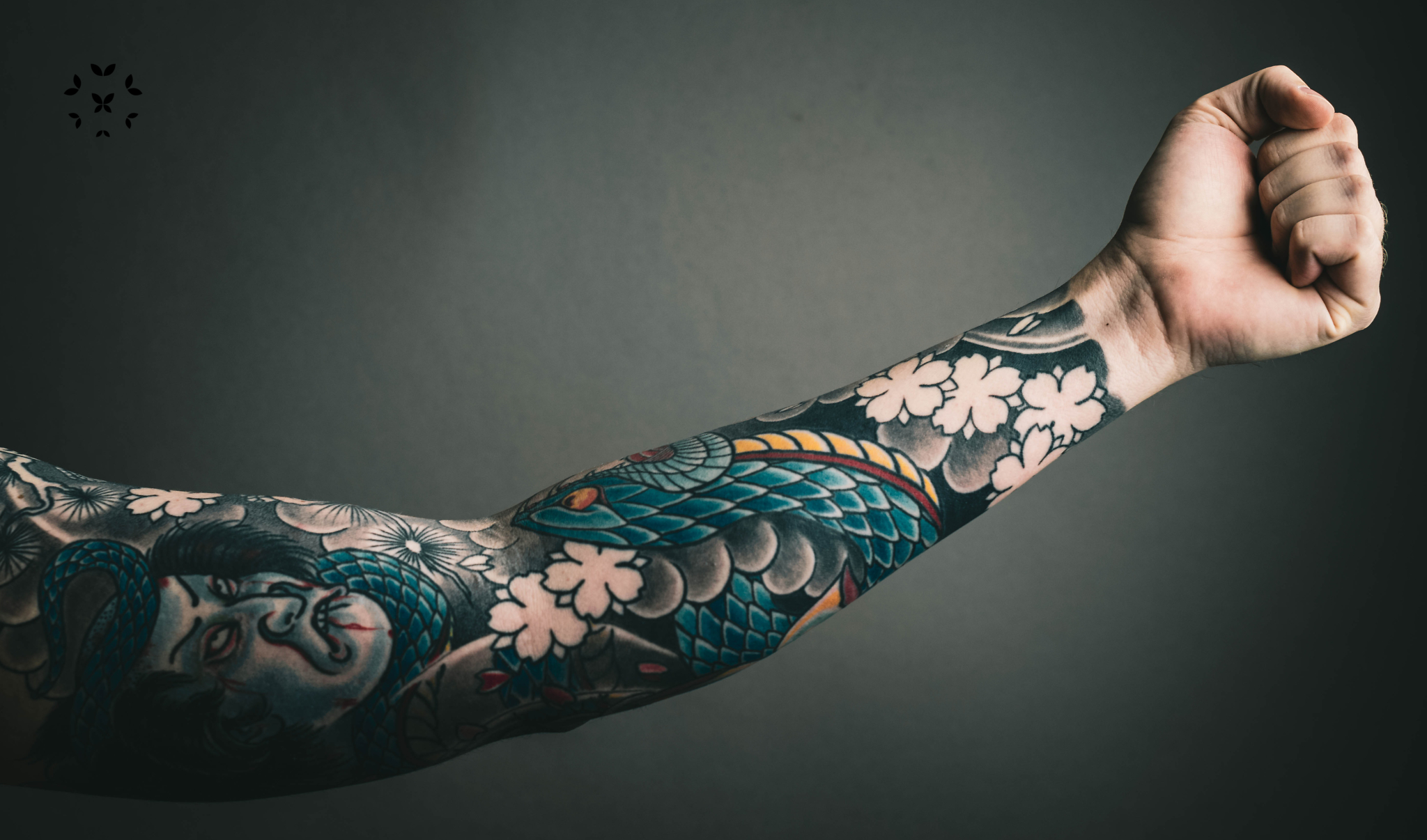
.
Traditional / Professional Tattoos:
These are often divided into cultural and modern forms depending upon whether the purpose is to honor a cultural heritage or to celebrate personal expression. When it comes to so called modern tattoos, these are created by trained artists who use specialized inks and tools called tattoo machines or pens. Tattoo machines contain needles that oscillate up and down to penetrate the dermis of the skin so that ink can permanently stain it. The variety of techniques and inks are too great to describe here, but even a brief search on the Internet will bring up a wealth of examples. The important thing to consider from a medical perspective is how much trauma to the skin the tattoo will cause in order to create the desired effect and what impact that may have on your immune system. Of course the choosing an amazing design is completely up to you!
Professional Cosmetic Tattoos:
Cosmetic tattoos tend to use more subtle techniques than professional tattoos. They are meant to improve one’s appearance, not necessarily to be works of body art or personal expression or perhaps even to be noticed as tattoos. They can be permanent or semi-permanent and replace the use of makeup to create fuller, more prominent eyebrows or to add color to lips. They require delicate tools and techniques, have evolved to use little pigment and do not penetrate very deep below the surface of the skin. For these reasons, most cosmetic tattoos are considered semi-permanent. There are a growing number of styles and techniques, and many can be used in combinations, though the two most common types are probably eyebrow microblading and microshading.
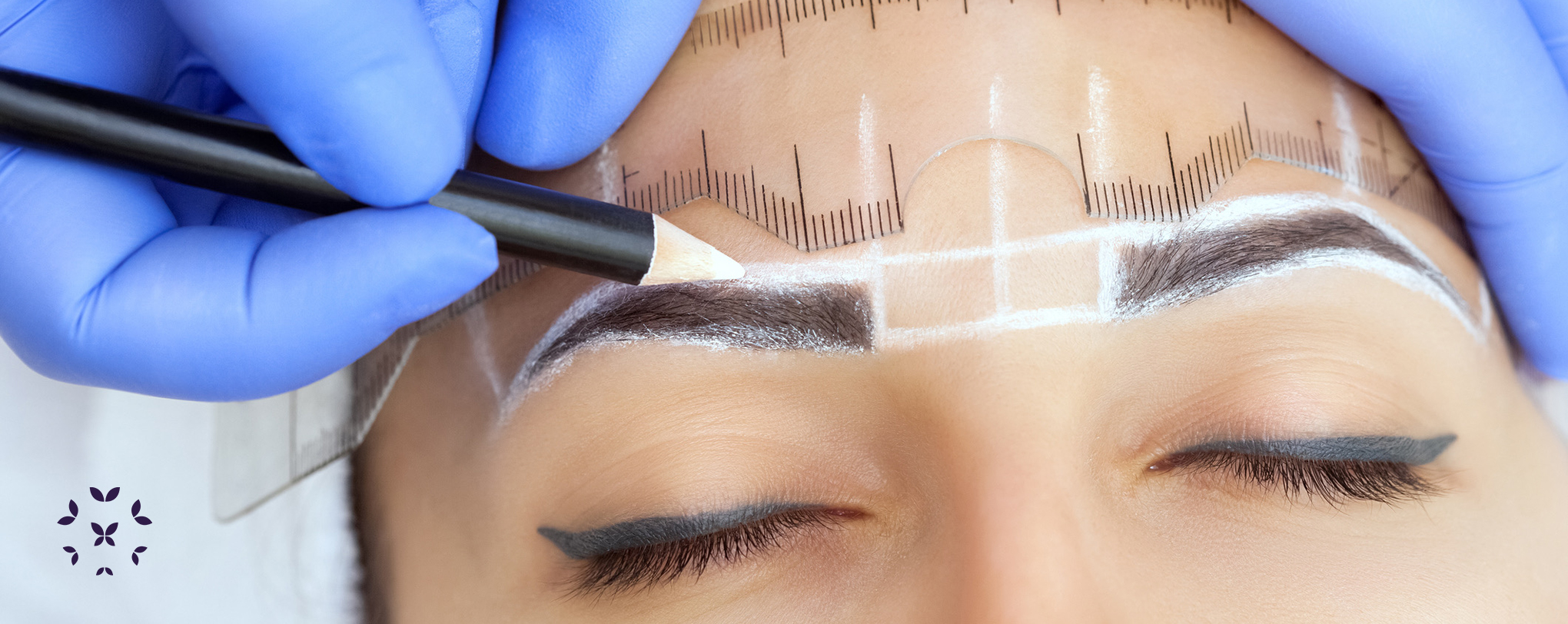
Microblading uses a very fine pen to cutting lines directly into the top layer of the skin to simulate individual hairs. This is done by hand along side the natural hair of the eyebrows. The pigments can last from one to three years, depending upon how well they are maintained.
Microshading or ombré shading is even less invasive than microblading. The pigment is deposited with an electric tool that creates a stippling effect that fills in the eyebrows between the hairs for a softer, fuller shadow appearance.
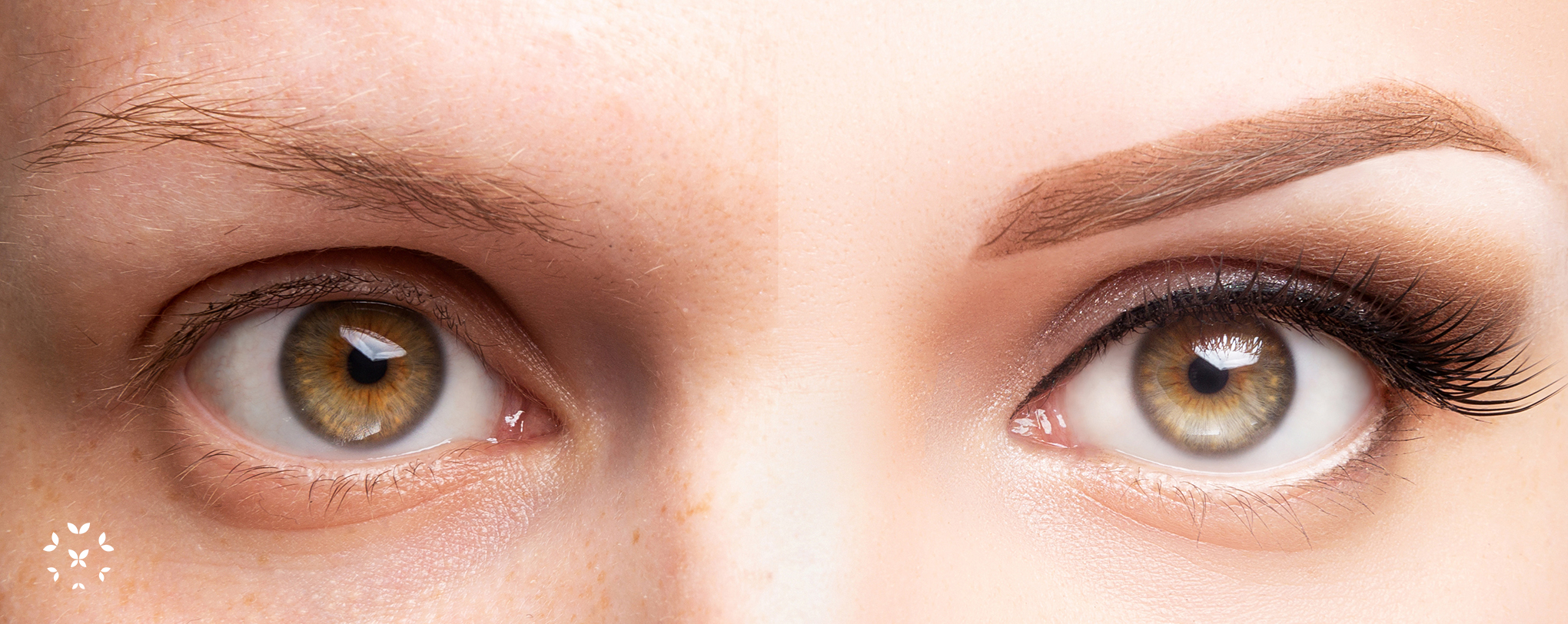
Medical Implications or Risk of Tattoos for those with lupus
As mentioned earlier, for those living with lupus or other autoimmune conditions, tattooing has the possibility of triggering an immune response and could possibly lead to a lupus flare or other reactions. Damage to the skin may initiate a clotting response to prevent bleeding and the immune system will react to defend the body from infection. The more significant, widespread and deep the damage to the skin, the stronger the responses may be. Though some of the less invasive techniques are perfectly harmless, in the end, it is difficult to predict how each person’s immune system will respond. Additionally, some lupus medications have the risk of their own adverse reactions to tattooing. Still many with lupus get tattoos without any problems.
As always check with your healthcare professional about your own condition before getting any form of tattoo.
Here are some of the risks to consider:
- Exacerbation of cutaneous lupus: Avoid getting tattoos when this disease is active.
- Infection: High-dose corticosteroid and some immunosuppressive therapies may increase the risk for certain infections.
- Koebner phenomenon (KP): KP is the development of lesions on skin that has gone through trauma, like tattooing, especially for those with psoriasis.
- Keloids: These are raised areas of thick scar tissue that may develop over the tattoo.
- Allergic reactions: Some dyes may cause allergic reactions even from tattoos that are years old.
- Blood-borne disease: Unsafe and unhygienic practices at the studio can increase the risk for contracting hepatitis C.
- Muscle inflammation and pain: Some individuals with compromised immune systems have reported increased muscle inflammation and pain after receiving a tattoo.
Tattoos do not cause skin cancers. However, they should not be placed over pigmented moles where they might make it difficult to identify possible changes in the mole that might require attention.
.
Tattoos on Dark Skin
According to journalist, A. Cooper, “People believe that it is harder to tattoo people of color, but like anything, the technique is what matters.” As with any piece of art, the “canvas” (the skin in this case) needs to be considered when creating the design. With darker skin tones, some details can get lost. However, a truly competent tattoo artist will understand this nuance and design a phenomenal tattoo. If a tattoo artist says that they cannot do a good job on darker skin, then you are in the wrong place. As is the case with anyone, no matter the ethnicity, find a tattoo artist that understands your vision and will work with you to achieve your goals.
There is one more thing to consider. According to the National Institutes of Health (NIH), “Darker skinned individuals form keloids 15 times more frequently than to their lighter skinned counterparts.” So, please take that into consideration. Otherwise, unless you have any of the risks described above, there should be no complications getting a tattoo.

What To Do After You Decide to Get a Tattoo
Now that you’ve decided to get a tattoo, the most important next steps include choosing the right artist and learning to care for your tattoo.
Choosing the Right Artist: First, know what you want; this is key when picking out a tattoo shop and artist. Get recommendations from someone who has worked with the artist. Looking at tattoos on a website is one thing, seeing that actual work on someone else is another. Make an appointment to talk to the artist, and make sure your idea of aesthetics matches theirs, that they are trained, licensed and use sterile technique, and make sure they know about your lupus. The artist may have experience with autoimmune conditions and could provide very useful recommendations.
Caring for Tattoos: After leaving the studio, be very careful with your new tattoo and watch out for any reactions or changes in your overall health. Strictly follow the after-care instructions provided by the tattoo artist, and in particular, always wash your hands before caring for a new tattoo, keep that area of your skin clean and moisturized, and avoid the sun for at least two weeks.
Long-term care for tattoos pretty much parallels that for any healthy skin care. Drink plenty of water, keep your skin hydrated, and protect the tattoo with sunscreen or protective clothing.
This is not an exhaustive list, and you should get detailed after-care instructions from your tattoo artist.
In Conclusion
Here’s a fact: People with lupus get tattoos. As a matter of fact, they get fantastic tattoos! We know; you’ve shared them with us, and we love them. Still it is important that anyone thinking about getting a tattoo understands the possible risks. Tattoos represent not only a life-long (or at least a long-term) commitment to self-expression, but also to a more conscious, intentional relationship with your own skin.
References
Ask the expert: Can a tattoo increase skin cancer risk? (2019). Skin Cancer Foundation. Retrieved July 28, 2020 from https://www.skincancer.org/blog/ask-the-expert-can-a-tattoo-increase-skin-cancer-risk/
Chike-Obi, C.J., Cole, P.D., & Brissett, A.E. (2009). Keloids: Pathogenesis, clinical features, and management. Seminars in Plastic Surgery, 23(3), 178-184.
Davis, N. (18, June 2018). Tattoo health warning for people with weakened immune systems. The Guardian.Retrieved July 28, 2020 from https://www.theguardian.com/fashion/2018/jun/18/tattoo-health-warning-for-people-with-weakened-immune-systems#:~:text=Tattoo%20health%20warning%20for%20people%20with%20weakened%20immune%20systems,-This%20article%20is&text=Getting%20a%20tattoo%20if%20you,of%20complications%2C%20doctors%20have%20warned.&text=Doctors%20say%20those%20taking%20immunosuppressant,precautions%20if%20considering%20body%20art.
How to care for your tattoo long term. (2018). U.S. Dermatology Partners. Retrieved July 28, 2020 from https://www.usdermatologypartners.com/blog/how-to-care-for-your-tattoo-long-term/
Hurly, A. (2020). Considering a tattoo? Here’s what you need ot know first. Men’s Journal. Retrieved July 28, 2020 from https://www.mensjournal.com/style/considering-tattoo-heres-what-you-need-know-first/
Johnson, J. (11, November 2017). Tattoo aftercare tips. Medical News Today. Retrieved July 28, 2020 from https://www.medicalnewstoday.com/articles/319980#:~:text=Washing%20the%20tattoo%20regularly%20but,be%20exposed%20to%20the%20sun.
Lineberry, C. (1, January 2017). Tattoos the ancient and mysterious history. Smithsonian Magazine. Retrieved July 28, 2020 from https://www.smithsonianmag.com/history/tattoos-144038580/
Sabio, J., Detolaza, S., & Vargas-Hitos, J. (2019). Characteristics and safety of tattoos in patients with systemic lupus erythematosus [abstract]. Lupus, 1250-1254. doi: 10.1177/0961203319867395. Retrieved July 28, 2020 from https://journals.sagepub.com/doi/abs/10.1177/0961203319867395?journalCode=lupa
Singh, L. (2016, November 27). For those with darker skin, finding the right tattoo artist can be a struggle. NPR. https://www.npr.org/2016/11/27/503520825/for-those-with-darker-skin-finding-the-right-tattoo-artist-can-be-a-struggle
Wang, R., Maher, M., Chung, C., & Kaffenberger, J. (2018). Koebner phenomenon of discoid lupus erythematosus [abstract]. Lupus, 241-243. doi: 10.1177/0961203318815578. Retrieved July 28, 2020 from https://journals.sagepub.com/doi/abs/10.1177/0961203318815578
Author: The KFL Team
All images unless otherwise noted are property of and were created by Kaleidoscope Fighting Lupus. To use one of these images, please contact us at [email protected] for written permission; image credit and link-back must be given to Kaleidoscope Fighting Lupus.
All resources provided by us are for informational purposes only and should be used as a guide or for supplemental information, not to replace the advice of a medical professional. The personal views expressed here do not necessarily encompass the views of the organization, but the information has been vetted as a relevant resource. We encourage you to be your strongest advocate and always contact your healthcare practitioner with any specific questions or concerns.


